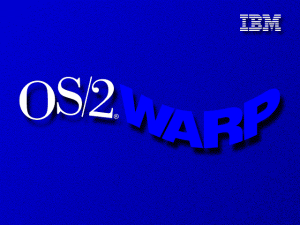 I remember it as yesterday – the excitement when IBM’s OS/2 Warp 4 first arrived. Released in 1996 – it was several generations ahead of Windows. It included Speech Recognition, Java support, and was more stable, fun, and friendly than Windows 95. A few years later and the entire operating system was basically dead, Microsoft Windows had defeated OS/2 and IBM gave up on the personal computer business. Why did the technically superior operating system lose?
I remember it as yesterday – the excitement when IBM’s OS/2 Warp 4 first arrived. Released in 1996 – it was several generations ahead of Windows. It included Speech Recognition, Java support, and was more stable, fun, and friendly than Windows 95. A few years later and the entire operating system was basically dead, Microsoft Windows had defeated OS/2 and IBM gave up on the personal computer business. Why did the technically superior operating system lose?
As with the success of most products, the key lies in the marketing and target audience. At that time, there were generally two types of companies: those focused on developers, and those focused on the consumer.
IBM was one of the truly innovative companies that were pushing the boundaries of technology. Their focus was on creating tools for developers to create groundbreaking applications. In the 90’s, developers were treated like rock stars, given bucket-loads of free goodies at tech conferences. The goal was to provide developers with amazing tools to create software, and the platform with the best software would hopefully then amass the widest user base. Very good platform for software development of custom business applications favorite of our Chicago programmers because of being the first reliable and robust Operating System
Microsoft and Apple, on the other hand, really didn’t have software that was terribly groundbreaking. Their true focus was always on the consumer and profit. Microsoft even tried to take control over the entire ecosystem – owning not just the operating system, but the primary software and productivity tools such as Microsoft Office and the Internet Explorer browser.
Apple then took this concept to the extreme with the iPad. In reality, development for the iPad is extremely limited compared to the PC. All apps are sandboxed, and it is more tedious than ever to write software. Apple even prevents you from publishing apps to their store unless they are approved by a moderator. Ironically, Apple has become the Big Brother they once had smashed at the Super Bowl.
The winning formula has become clear. Focus on usability and the end users will generate profits, while focus on the developers and technology only results in whimsical blog posts twenty years later about the way things should have been.
The problem with this formula is the resulting downward spiral in innovation and technology. Great improvements in science and technology are unlikely when many of the best minds invest their time in gaining market share and creating new ways to suck money and time from consumers, instead of in breaking scientific barriers.
Pop-Science needs to be acknowledged and recognized for what it is. Just like pop-music can be a great way to make millions at the sacrifice of artistic integrity – pop-science should be similarly regarded in the technical field. It’s time to take back technology, and create software that will truly change the world for the better.
Written by Andrew Palczewski
About the Author
Andrew Palczewski is CEO of apHarmony, a Chicago software development company. He holds a Master's degree in Computer Engineering from the University of Illinois at Urbana-Champaign and has over ten years' experience in managing development of software projects.
Google+








However, one may argue that focus on the mass market customer is the key. At least this is the prevailing paradigm today. Otherwise, who will fund the investment, the government?
That’s a good point – the mass market is funding most of the technology. From what we have seen, consumer-focused feel-good technology will always be an easy source of wealth. There is also a shortage of good engineers, developers, and researchers in Silicon Valley and elsewhere. The goal would be to create a culture where projects supporting real technological progress provide self-actualization and higher purpose, in addition to compensation. The largest concentration of researchers is in academia, and although many are pursuing interesting research, the bridge that links those advanced research projects to industry seems to be weaker now than before.